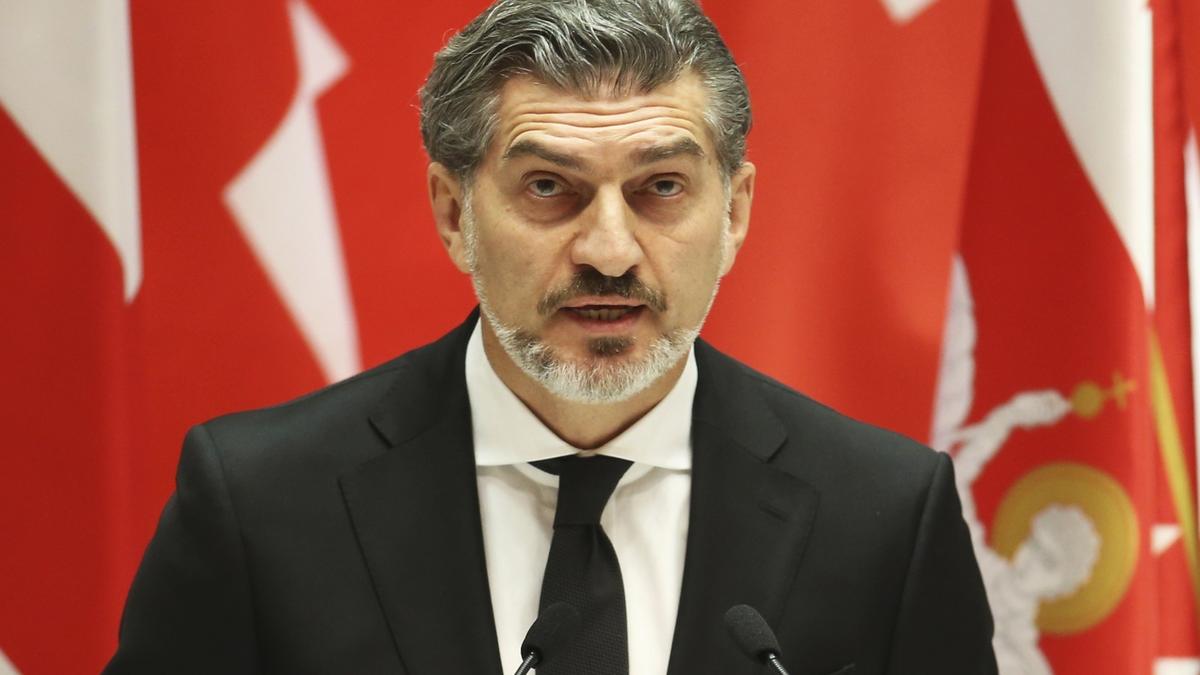Georgian President-elect Mikheil Kavelashvili speaks at his swearing-in ceremony at the Georgian Parliament in Tbilisi on December 29, 2024.
| Photo Credit: AP
With the dawn of the 21st century, post-Soviet States experienced a wave of uprisings known as the “colour revolutions”. The movements were associated with specific colours and were largely peaceful protests to replace pro-Moscow governments with a pro-West government in the name of democratic reforms. Though they were non-violent, peaceful and democratic, the Russian elites often perceived them to be western-backed strategies in order to weaken Moscow’s sphere of influence.
The most notable examples include Georgia’s Rose Revolution (2003), Ukraine’s Orange Revolution (2004), and Kyrgyzstan’s Tulip Revolution (2005). These protests, on the face of it, appeared peaceful and democratic. Still, these movements received active help from western governments and organisations such as the National Endowment for Democracy (NED), formed during the Cold War to support and promote American social and political values.
The Russian view
British strategist B.H. Liddell Hart’s concept of fighting “on the other side of the hill” aptly describes such an approach which prioritised destabilisation and political subversion over confrontation. Russia viewed such movements as threats to its influence in neighbouring States and as a model that could inspire similar challenges within its borders. This perspective extended beyond former Soviet space, with Russia and other powers, including China, seeing these revolutions as a blueprint for low-cost, high-impact interventions in regions such as West Asia, Africa, Central Asia and South Asia.
Editorial | Stay out: On Georgia’s politics
The fate of these ‘colour revolutions’ was not up to the expectations for which they were brought about — that is, transforming these States, most of them with primordial loyalties, into a corruption-free western ally. Very soon the changes that resulted failed to ameliorate the situation on the ground. One set of corrupt people was replaced by another set of corrupt people owing their allegiance and political ideas to the West. The people gradually became frustrated and public disillusionment over unfulfilled expectations also arose. The long-term failures of these patterns of transitions have highlighted the limits of these externally-driven democratic experiments.
The Rose Revolution 2.0
Georgia’s Rose Revolution is a pivotal example of this phenomenon. This movement replaced the then President Eduard Shevardnadze with a pro-West President, Mikheil Saakashvili. Initially celebrated as a victory for democratic values, it became increasingly evident that the ‘revolution’s’ success was facilitated by western backing, and the movement was given financial and logistical support by patrons in the West, especially the United States. Soon after the election, the Saakashvili regime became synonymous with corruption, authoritarianism and undemocratic practices, further maligning the movement’s character.
Two decades later, a similar scenario is unfolding in Georgia. Recent parliamentary and presidential elections have reignited passions, with the ruling Georgian Dream party securing a decisive and clear victory. One of the outcomes of these elections was the change of guard in the presidential office. The Georgian Dream Party candidate, Mikheil Kavelashvili, a former footballer, was elected President.
The former President, Salome Zourabichvili, who had initially refused to vacate the office and the presidential palace in favour of the incumbent President, agreed to leave, calling herself the ‘only legitimate President’. She also alleged that the parliamentary and presidential elections were marred by electoral malpractices and corruption, and hence ‘illegitimate’. Ms. Zourabichvili was empathetic towards the protests against the ‘illegitimate’ elections and joined in the street protests.
The ruling party alleged that these protests were organised at the behest of the West through non-governmental organisations funded by them — proving their contention about external interferences in Georgia’s internal matters. This is not without precedent. The post-Soviet space has long been a battleground for competing geopolitical agendas, with western-backed ‘movements’ challenging Moscow-aligned regimes.
There is a relative downgrade in the position that Russia held prior to its war with Ukraine, at least in the short term. Russia is more focused on its ties with the ‘Near Abroad’, but this narrative often underestimates Russia’s enduring resilience as a significant power in the post-Soviet space.
Protests in Georgia have also coincided with a period of heightened global anxiety over the role that the U.S. might play, with Donald Trump now the American President. Internal challenges have limited Washington’s capacity to engage decisively in Georgia. As a result, the effectiveness of soft power strategies such as promoting democracy through colour revolutions, is waning.
The importance of Georgia
Georgia’s strategic positioning, at the crossroads of Europe and Asia, makes it a focal point for major power struggles. Its geography and historical vulnerabilities have left it susceptible to external influences, positioning it as a pawn in broader geopolitical contests. Georgian politics illustrates the challenges of balancing domestic governance with external pressures in an increasingly complex world. As the U.S. grapples with its diminishing global influence and Russia continues to assert its role as a regional power, Georgia is deftly managing its relationships with both East and West.
The broader implications of this struggle extend beyond Georgia, shaping the political trajectories of other post-Soviet States that are caught in the crossfire of competing geopolitical agendas. Whether the colour revolution model remains a viable tool for political change or fades into history as a relic of early 21st-century geopolitics will depend on the evolving dynamics of international relations, testing the resilience of States navigating these turbulent times.
Amitabh Singh teaches at the School of International Studies, Jawaharlal Nehru University, New Delhi. Vivek Pandey is a PhD candidate at the School of International Studies, Jawaharlal Nehru University, New Delhi
Published – February 18, 2025 12:08 am IST
